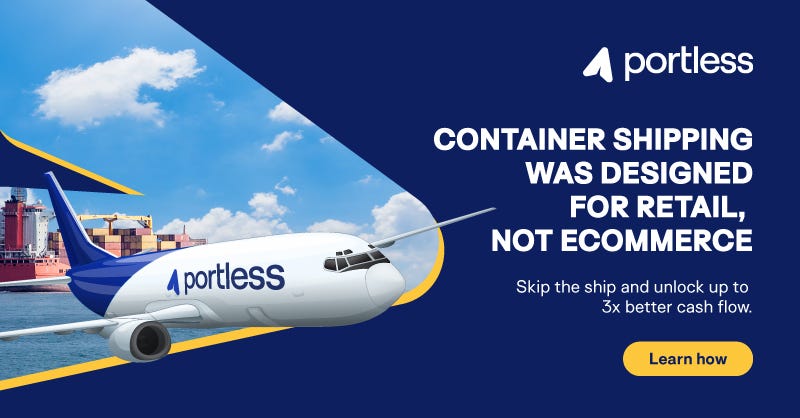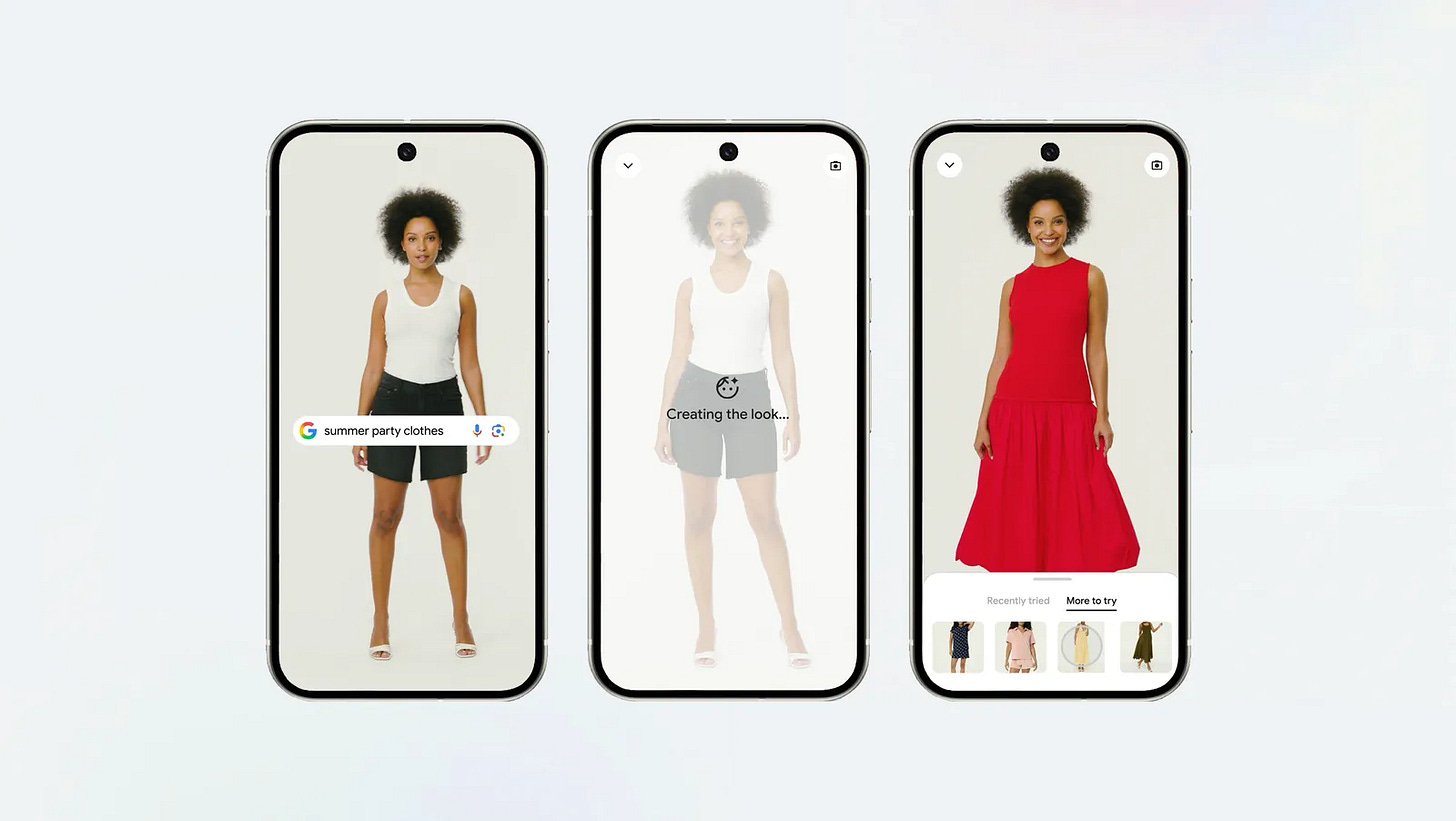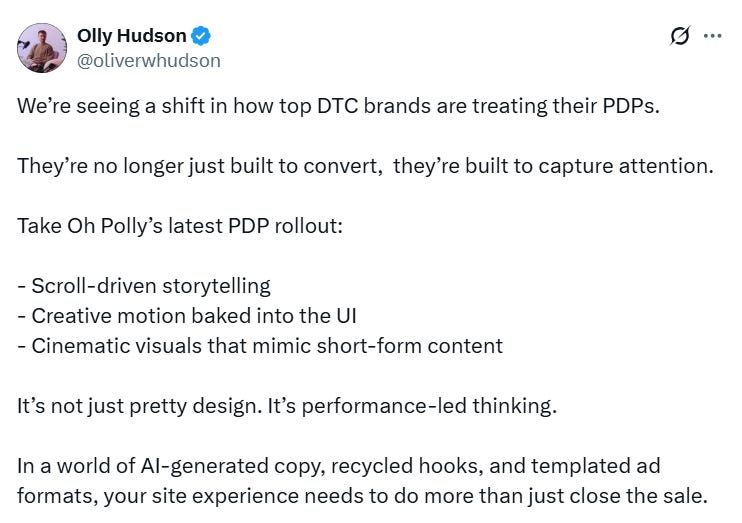Draw the Pain to Trigger the Brain
✍️ Why sketch-style ads unlock deeper cognition and higher conversions, Google Supercharges Shopping with AI-Powered Try-Ons, Price Alerts, and Style Search, and more!
Howdy Readers 🥰
In this newsletter, you’ll find:
✍️ Draw the Pain to Trigger the Brain: Why sketch-style ads unlock deeper cognition and higher conversions.
🛍️ Google Supercharges Shopping with AI-Powered Try-Ons, Price Alerts, and Style Search
🚀Tweet of the Day
If you’re new to Buyology then a hearty welcome to you, You’ve reached the right place alongside 50k+ amazing people, Before you forget, if someone forwarded this newsletter to you, don't forget to subscribe to our newsletter so you never miss out!
Together with Portless
⛔ Tariffs Slowed You Down. Don’t Let Shipping Finish the Job.
The recent tariff spike crushed summer sales for brands that ran out of inventory, or held off for policy changes. 😓
And while tariffs are temporarily reduced for the next 90 days, it won’t matter if your inventory is still drifting in on a boat 6 weeks from now.
Here’s how Portless changes the game:
✅ Restock fast-moving products in just 3–5 days
✅ Start selling right after manufacturing wraps
✅ Only pay tariffs after each customer purchase
✅ Turn 6-week delays into 6-day deliveries directly from China
Instead of overstocking or tying up cash, Portless helps brands stay light, liquid, and lightning-fast.
You unlock up to 3× better cash flow, protect margins, and gain the speed you need to win the season.
📊Want to see if Portless works for your brand?
Book a free risk assessment and get a custom fulfillment cost reduction audit based on your inventory, SKUs, and timelines.
✍️ Draw the Pain to Trigger the Brain: Why sketch-style ads unlock deeper cognition and higher conversions.
Most ad formats show you the problem. But whiteboard-style sketch ads do something more powerful: They make your brain complete it.
By activating spatial reasoning, gesture memory, and cause-and-effect inference, these sketch-style ads force your brain to think through the pain before the solution ever shows up. And in DTC marketing, that’s gold.
🧠 Why Sketching Pain Works Better Than Showing It
Our brains are designed to respond to unfinished visual stories.
A hand drawing a clogged pore, a gut map, or a cortisol loop does more than inform; it pulls the viewer in with implied motion and anticipation. This triggers the Zeigarnik Effect: people remember uncompleted visuals more vividly than finished ones. And with every stroke, they’re not just watching, they’re processing.
This builds what’s known as embodied cognition; your brain simulates the act of drawing or mapping, embedding the problem deeper in memory.
Flat Ads vs. Spatial Reasoning Ads
A static UGC ad might say: “Tired of bloating and fatigue?”
But a whiteboard ad draws the entire domino chain:
[Stress] → [Cortisol Spike] → [Gut Disruption] → [Fatigue/Bloating]
Now the viewer sees the problem as a system, and your product becomes the clear pattern interrupter. This transforms your offer from “random supplement” into the missing gear in a broken machine.
Sketch = Mini Retention Engine
Here’s the hidden unlock:
When a shopper mentally rehearses the logic of your product, they’re more likely to stick with it post-purchase. Retention flows built on sketch-logic (drawn reorder reminders, whiteboard-style explainer emails) act like memory glue, reinforcing why they bought, not just what.
Try This Whiteboard Test
Before you run a new ad concept, sketch the pain sequence in 4 steps. If it doesn’t make sense visually, your offer is likely unclear. If it does, that’s your first 15 seconds of ad creative, validated.
Most DTC ads compete for attention. Whiteboard ads capture cognition. They don’t just show the pain, they force the viewer to live it in real time. And that’s what makes them unforgettable and unstoppable.
🛍️ Google Supercharges Shopping with AI-Powered Try-Ons, Price Alerts, and Style Search
Google is rolling out a series of AI upgrades to its shopping tools aimed at enhancing how users discover and buy products. These tools are now available to U.S. users and will expand further over time.
The Breakdown:
1. Advanced Virtual Try-On for Clothing - Shoppers can now use a full-length selfie to see how clothes would look on them directly in search results. The AI overlay lets users browse, save, and share different outfits, making online apparel shopping feel more personalized.
2. Smarter Price Tracking with Alerts - Users can set custom alerts that factor in product size, color, and target price for any item. Google’s Shopping Graph scans prices across the web and notifies shoppers when deals meet their criteria.
3. Style Search Using Natural Language - Google has added conversational text search to help users find products that match specific descriptions or vibes. AI-generated results now surface relevant listings based on phrasing like “flowy summer dress for weddings.”
These features mark a major step toward making online shopping as interactive and responsive as in-store experiences. By combining image-based try-ons, smart pricing, and flexible search, Google is building a more personalized, frictionless path to purchase.
🗝️ Tweet of the Day
Advertise with Us
Wanna put out your message in front of over 50,000 best marketers and decision makers?
Checkout our Partner Kit here🤝
At Buyology, we care about our readers and want to provide the best possible experience. That's why we always look for ways to improve our content and connect with our audience. It would be amazing if you could hit us up with feedback about our content or absolutely anything, we are always up for a chat 🥰
Thanks for your support, We'll be back with more such content 🥳



